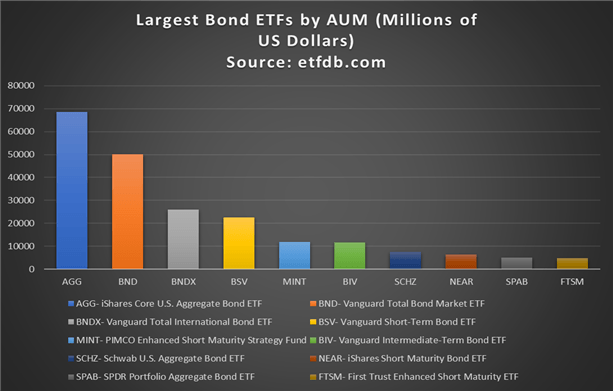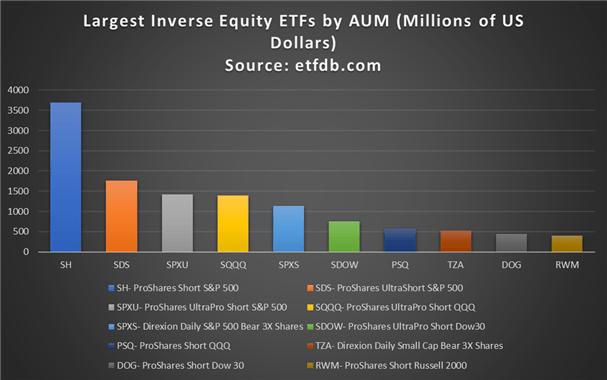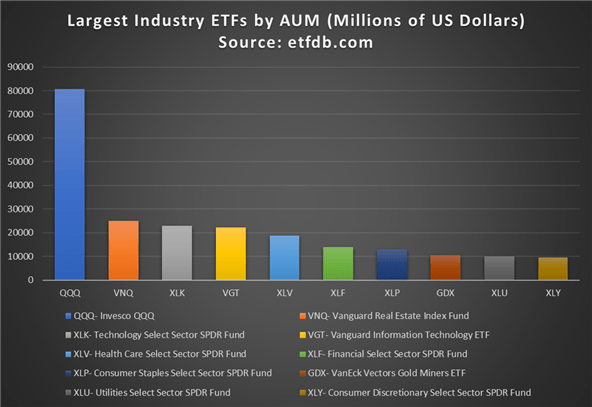Those interested in equities can trade various types of stock and major stock indices , or they can put their money into mutual funds or ETFs - tradeable securities that each encompass a range of different stocks and other assets. But what are the largest and most popular ETFs? In this piece, we’ll give some background on the largest ETFs both overall and by type.
How to determine the largest ETFs
To determine the largest ETFs in any category it’s necessary to first set some definitions. Generally, it’s by assets under management or sometimes shortened to ‘AUM,’ which means the total amount of money invested in all of the fund’s share classes. Higher amounts of AUM will often correlate with higher trading volume, which in turn can produce a tighter spread. This can potentially make larger ETFs a more attractive option for investors if volumes are higher and spreads are tighter.
Largest ETFs overall
The largest ETFs by AUM as of April 1 2020 are the SPDR S&P 500 ETF, with $210 billion in AUM, the iShares Core S&P 500 ETF , with $120 billion in AUM, and the Vanguard Total Stock Market ETF, with $73 billion in AUM. The chart below shows the top ten largest ETFs, all but one of which are equity ETFs tracking major indices.

Largest currency ETFs
Currency ETFs provide exposure to foreign exchange, investing in currencies such as USD and CAD . The largest currency ETFs as of April 1 2020 include the Invesco DB US Dollar Index Bullish Fund, with some $982 million in AUM, the Invesco CurrencyShares Euro Currency Trust, with $273 million in AUM, and the Invesco CurrencyShares Japanese Yen Trust, with $234 million in AUM.
The chart below shows the top ten largest currency ETFs.

Largest bond ETFs
Bond ETFs provide exposure to fixed income securities such as US Treasuries or German Bunds. The largest bond ETFs as of April 1 2020 include the iShares Core US Aggregate Bond ETF, with $68 billion in AUM, the Vanguard Total Bond Market ETF with $50 billion in AUM, and the Vanguard Total International Bond ETF, with $26 billion in AUM. The chart below shows the top ten largest bond ETFs.

Largest commodity ETFs
Commodity ETFs provide exposure to physical commodities such as natural resources, precious metals or agricultural goods. The largest commodity ETFs as of April 1 2020 include the Invesco Optimum Yield Diversified Commodity Strategy No K-1 ETF, with $1.53 billion in AUM, the Invesco DB Commodity Index Tracking Fund, with $752 million in AUM, and the iShares S&P GSCI Commodity-Indexed Trust, with $477 million in AUM. The chart below shows the top ten largest commodity ETFs by this measure.

Largest inverse ETFs
Inverse ETFs are designed to return the opposite result of a given benchmark. The largest inverse ETFs traded in the US as of April 01 2020 are the ProShares Short S&P 500, with $3.69 billion in AUM, the ProShares Ultrashort S&P 500, with $1.75 billion in AUM, and the ProShares UltraPro Short S&P 500, with $1.41 billion in AUM. The chart below shows the top ten largest inverse ETFs.

Largest industry ETFs
Industry or sector ETFs provide exposure to stocks of a particular industry, for example pharma or retail. The largest industry ETFs as of April 1 2020 are the tech ETF Invesco QQQ , with $80.6 billion in AUM, the Vanguard Real Estate Index Fund, with $25 billion in AUM, and the Technology Select Sector SPDR Fund, with $23 billion in AUM.
The chart below shows the top ten largest industry ETFs.

FAQs
How popular are ETFs?
ETFs have exploded in popularity in recent years, overtaking hedge funds in the last decade in terms of AUM, although still remaining some distance away from both mutual funds and pension funds in this regard.
What is the size of the ETF market?
As of April 2020 the size of the ETF market is in excess of $5 trillion in assets. In December 2019, Bank of America predicted the ETF market will hit $50 trillion by 2030.
What is the oldest ETF?
The oldest ETF is also the largest by AUM: the SPDR S&P 500 ETF Trust, established in 1993, which carries the ticker symbol of ‘SPY.’
Do ETFs pay dividends?
Yes, ETFs can pay dividends like shares do. When the companies within the ETF pay dividends, they send the money to the ETF provider which in turn can either pass them to the investor or reinvest them back into the fund. For more background, check out our What is an ETF piece.
Further reading on equities
Looking for more information on equities? Check out our beginner’s guide to trading stocks and find out how the stock market affects the economy .

